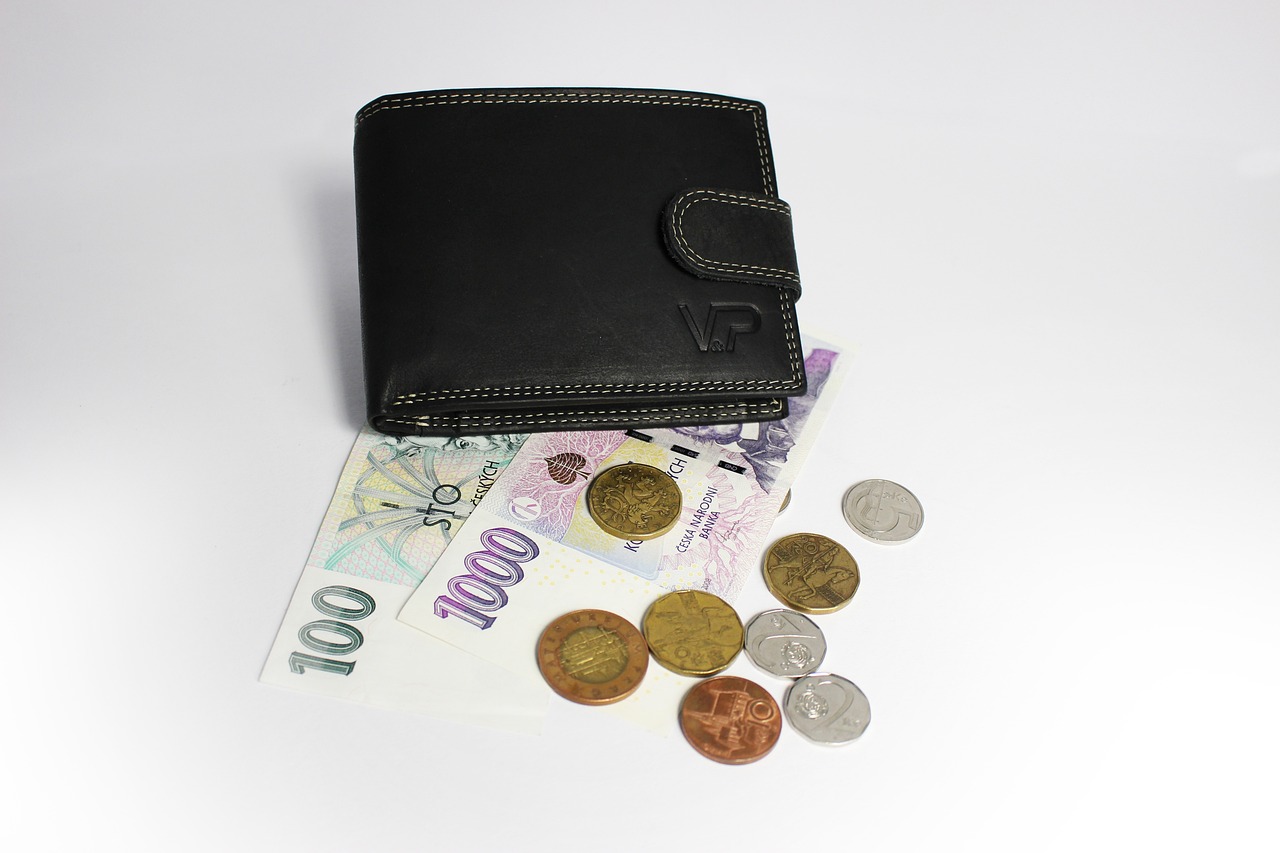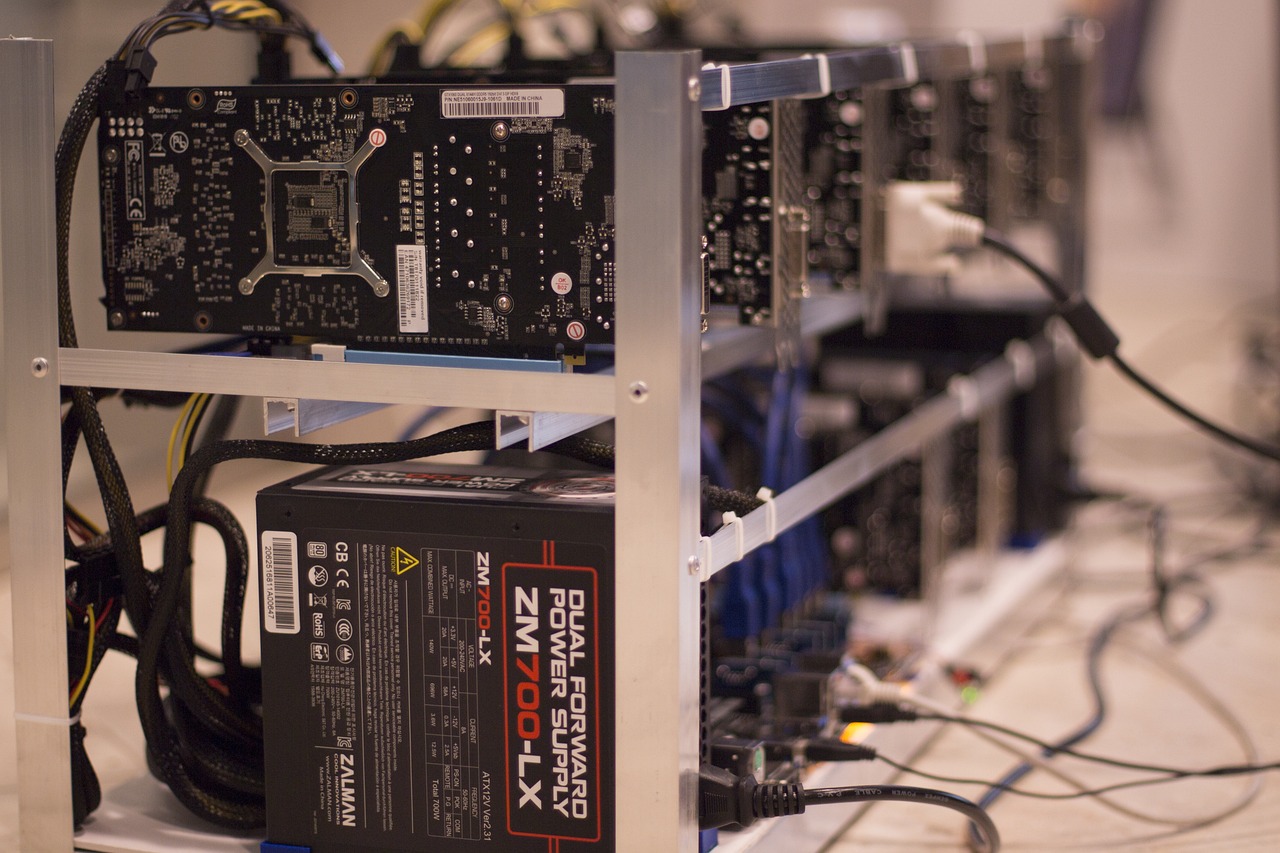Understanding Wallet Interoperability Challenges
In the fast-paced world of cryptocurrency, the term wallet interoperability is becoming increasingly important. But what does it really mean? Simply put, wallet interoperability refers to the ability of different digital wallets to communicate and transact with one another seamlessly. Imagine trying to send a letter, but your friend only accepts messages written in a different language. Frustrating, right? This is akin to the challenges faced by users across various cryptocurrency wallets today. As the digital currency landscape continues to evolve, the need for seamless transactions across different platforms becomes more critical than ever.
Many users find themselves juggling multiple wallets, each designed for specific cryptocurrencies or platforms. This fragmentation not only complicates transactions but also creates a barrier to broader adoption of digital currencies. Wallet interoperability can significantly enhance user experience by allowing individuals to transact effortlessly across various platforms without the hassle of managing multiple wallets. However, achieving this level of interoperability is no small feat. It requires overcoming several technical and security challenges that currently plague the industry.
In this article, we will explore the complexities surrounding wallet interoperability, examining the barriers that hinder seamless transactions across different digital wallets and the potential solutions that could pave the way for a more integrated future. By understanding these challenges, we can appreciate the innovations that are being developed to enhance wallet interoperability, ultimately leading to a more user-friendly cryptocurrency experience.
As we dive deeper into this topic, we will discuss the importance of wallet interoperability and the various technical barriers that stand in the way. We will also explore potential solutions that could bridge the gap between disparate wallets, ensuring that users can transact with ease and confidence. So, buckle up as we embark on this journey to unravel the intricacies of wallet interoperability!

The Importance of Wallet Interoperability
In today's rapidly evolving digital landscape, wallet interoperability is not just a luxury; it's a necessity. Imagine a world where you can send and receive cryptocurrency seamlessly, without the hassle of converting assets or switching between multiple wallets. This is the promise of interoperability, and it plays a crucial role in enhancing the overall user experience and driving the widespread adoption of digital currencies.
One of the most significant benefits of wallet interoperability is the ability to transact effortlessly across various platforms. Users no longer need to juggle multiple wallets for different cryptocurrencies; instead, they can manage their assets from a single interface. This convenience not only saves time but also reduces the risk of errors during transactions. Consider this: if you had to carry multiple keys for different locks, you'd likely misplace one or forget which key opens which door. Wallet interoperability eliminates this chaos, allowing users to focus on what truly matters—making transactions and engaging with the digital economy.
Furthermore, wallet interoperability fosters a more inclusive ecosystem. It opens the door for collaboration between different blockchain networks, creating a more integrated financial landscape. For instance, if a user wants to move assets from Ethereum to Bitcoin, interoperability ensures that this process is smooth and straightforward. This interconnectedness not only enhances user confidence but also encourages more people to participate in the cryptocurrency space, knowing that they can transact freely without being confined to a single platform.
Additionally, the importance of wallet interoperability extends beyond just convenience. It also plays a vital role in security. When wallets can communicate with one another, it allows for the implementation of robust security protocols that can safeguard transactions across platforms. Users can rest assured that their assets are protected, regardless of the wallet they choose to use. This security aspect is paramount, especially in an industry where trust is still being established.
In conclusion, the significance of wallet interoperability cannot be overstated. It enhances user experience, promotes inclusivity, and strengthens security within the cryptocurrency ecosystem. As we move forward, the demand for seamless transactions across different digital wallets will only grow, making the development of interoperability solutions a top priority for developers and users alike.

Technical Barriers to Interoperability
When we dive into the world of wallet interoperability, we quickly encounter a series of technical barriers that stand in the way of seamless transactions. These challenges are not just minor hiccups; they are significant roadblocks that can frustrate even the most tech-savvy users. Imagine trying to communicate with someone who speaks a completely different language—this is akin to what happens when different wallets, built on various blockchain protocols, attempt to interact.
One of the primary culprits behind these compatibility issues is the existence of different blockchain protocols. Each blockchain has its own set of rules and transaction mechanisms, which can create a chaotic environment for wallets trying to work together. For instance, when one wallet uses a protocol that relies on a specific algorithm for validating transactions, and another wallet employs a different approach, the two can find themselves speaking entirely different "languages." This lack of uniformity not only complicates transactions but also leads to increased transaction times and costs, ultimately discouraging users from embracing digital currencies.
Moreover, smart contracts—the backbone of many blockchain transactions—can also contribute to interoperability issues. These contracts are designed to automate and enforce agreements between parties, but their effectiveness can be hampered by differences in contract standards across various platforms. When wallets utilize incompatible smart contracts, it can lead to complications that slow down or even halt transactions altogether. In a world where speed and efficiency are vital, these delays can be detrimental.
Another significant barrier lies in data formats. Just as we use different languages to communicate, wallets often use various data structures to process information. When these data formats do not align, it can create a bottleneck that prevents smooth communication between wallets. Establishing common data structures is essential for enabling smooth transaction processing. Without this standardization, users may find themselves stuck in a frustrating loop of failed transactions and wasted time.
Lastly, we cannot overlook the security considerations that accompany wallet interoperability. As we strive for seamless transactions, we must also ensure that security remains a top priority. The more wallets interact with one another, the greater the risk of potential vulnerabilities being exploited. This necessitates the implementation of robust security measures and protocols to protect users' assets and personal information. Striking a balance between convenience and security is crucial, and finding that equilibrium is one of the ongoing challenges facing developers in the cryptocurrency space.
In summary, the technical barriers to wallet interoperability are multifaceted, encompassing everything from differing blockchain protocols and smart contract standards to inconsistent data formats and security concerns. Overcoming these challenges is essential for creating a more integrated and user-friendly digital currency experience. As we look to the future, addressing these issues will pave the way for a more harmonious and efficient cryptocurrency landscape.

Blockchain Protocols
When we dive into the world of , we're stepping into a complex web of technology that serves as the backbone of digital currencies. Each blockchain operates on its own set of rules and mechanisms, which can lead to compatibility issues between different wallets. Imagine trying to fit a square peg into a round hole; that’s what happens when wallets built on different protocols attempt to communicate. Each protocol has unique characteristics, making it a challenge for wallets to share data and transact seamlessly.
For instance, consider the difference between Bitcoin and Ethereum. Bitcoin operates on its own blockchain with a specific set of rules for transactions, while Ethereum introduces the concept of smart contracts, allowing for more complex interactions. This divergence means that a wallet designed for Bitcoin may not be able to handle Ethereum transactions effectively. The inability to communicate across these platforms creates a fragmented experience for users, who often find themselves juggling multiple wallets to manage their digital assets.
Furthermore, the variety of consensus mechanisms—like Proof of Work versus Proof of Stake—adds another layer of complexity. Each protocol's method for validating transactions affects how wallets interact with one another. For example, if a user wants to transfer assets from a Proof of Work blockchain to a Proof of Stake blockchain, the differences in transaction validation can create significant hurdles. This is akin to trying to send a letter through two different postal systems that don’t recognize each other's formats.
In light of these challenges, the need for interoperability becomes even more pressing. To address these issues, developers are working on creating cross-chain solutions that can facilitate communication between different blockchain protocols. These solutions aim to create a more unified ecosystem, allowing users to transact across various wallets without the hassle of compatibility issues. As we continue to innovate and develop these technologies, we inch closer to a world where digital wallets can seamlessly interact, enhancing the overall user experience.
In summary, understanding blockchain protocols is crucial for grasping the intricacies of wallet interoperability. The unique characteristics of each protocol not only define how transactions are conducted but also dictate the level of compatibility between different wallets. As the landscape of digital currencies evolves, addressing these challenges will be key to unlocking the full potential of cryptocurrency and fostering broader adoption.
- What are blockchain protocols? Blockchain protocols are the rules and standards that govern how transactions are processed and validated on a blockchain network.
- Why do different wallets have compatibility issues? Different wallets may be built on various blockchain protocols, each with its own unique transaction mechanisms, leading to communication barriers.
- How can wallet interoperability be improved? Through the development of cross-chain technologies and standardized protocols, wallet interoperability can be enhanced.

Smart Contracts
Smart contracts are essentially self-executing contracts with the terms of the agreement directly written into code. They run on blockchain technology, which makes them immutable and secure. Imagine a vending machine: you insert money, select a product, and the machine automatically dispenses it. Smart contracts operate on a similar principle, eliminating the need for intermediaries and ensuring that agreements are executed precisely as intended.
However, while smart contracts offer numerous advantages, they also introduce their own set of challenges when it comes to wallet interoperability. Different blockchain platforms may utilize varying standards for smart contracts, leading to compatibility issues. For instance, a smart contract designed for Ethereum may not function on a platform like Binance Smart Chain due to differences in how each blockchain interprets contract logic. This disparity can create significant hurdles in facilitating seamless transactions across wallets.
Moreover, the complexity of smart contract programming languages can further complicate interoperability. Each blockchain typically has its own unique language (like Solidity for Ethereum), which means that developers must be well-versed in multiple languages to create contracts that can work across different platforms. This necessity can lead to increased development time and costs, ultimately hindering the widespread adoption of interoperable wallets.
To address these challenges, there is a growing call for standardized frameworks that can streamline smart contract development and execution. By establishing common protocols and languages, developers can create contracts that are more universally compatible, enabling smoother transactions between different wallets. This could involve:
- Creating a universal programming language for smart contracts.
- Establishing a set of guidelines for contract deployment across various blockchains.
- Encouraging collaboration among blockchain developers to create interoperable solutions.
In conclusion, while smart contracts hold immense potential for enhancing wallet interoperability, addressing the existing challenges is crucial. By focusing on standardization and collaboration, the blockchain community can pave the way for smarter, more efficient transactions across different digital wallets.
Q1: What are smart contracts?
A1: Smart contracts are self-executing contracts with the terms coded into the blockchain, allowing for automatic execution without intermediaries.
Q2: How do smart contracts enhance wallet interoperability?
A2: Smart contracts can streamline transactions between different wallets, but compatibility issues across various blockchain protocols can hinder this process.
Q3: What challenges do smart contracts face in terms of interoperability?
A3: The primary challenges include differences in programming languages, varying standards across blockchains, and the complexity of smart contract logic.
Q4: How can these challenges be addressed?
A4: Establishing standardized frameworks and promoting collaboration among blockchain developers can help create more interoperable smart contracts.

Data Formats
In the realm of digital wallets, are a critical aspect that often gets overlooked. Think of data formats as the languages that wallets speak; just like people from different countries may struggle to communicate due to language barriers, wallets with incompatible data formats face similar challenges. This inconsistency can lead to significant issues in interoperability, making it difficult for wallets to process transactions smoothly. Imagine trying to send an email from one platform to another, only to find that the recipient's email client doesn't understand the format of your message. Frustrating, right? That's precisely what happens when different wallets can't interpret each other's data.
When we talk about data formats in the context of cryptocurrency wallets, we're referring to the structures and types of information that wallets use to represent transaction details, account balances, and user information. Each wallet may adopt its own unique format, leading to a fragmented ecosystem where seamless transactions become a challenge. For instance, one wallet might represent user balances in a decimal format, while another might use a hexadecimal system. This disparity can create confusion and errors during transactions, much like trying to solve a puzzle with pieces from different boxes.
To facilitate better interoperability, it is essential to establish common data structures that all wallets can adhere to. This would not only streamline communication between wallets but also enhance the overall user experience. By having a unified data format, wallets could easily exchange information without the need for complex conversions or adaptations. Imagine if every wallet could simply "speak" the same language; transactions would become as effortless as sending a text message to a friend.
In light of these challenges, ongoing discussions among developers and industry leaders have led to the exploration of standardized data formats. These standards would serve as a bridge, allowing different wallets to communicate effectively and securely. For instance, if a universal data format for transaction details were to be adopted, it could significantly reduce the friction users experience when trying to move assets between wallets. The goal is to create an environment where users can transact across different platforms with confidence, knowing that their information is accurately represented and securely transmitted.
In conclusion, addressing the issue of inconsistent data formats is vital for achieving true wallet interoperability. By developing and implementing standardized data structures, the cryptocurrency community can pave the way for a more cohesive and user-friendly digital wallet experience. This is not just a technical challenge; it's about enhancing the way users interact with their digital assets and ensuring that the future of finance is accessible to everyone.
- What is wallet interoperability? Wallet interoperability refers to the ability of different digital wallets to communicate and transact with one another seamlessly.
- Why are data formats important for wallet interoperability? Data formats determine how information is structured and shared between wallets, and incompatible formats can hinder smooth transactions.
- What solutions are being developed for wallet interoperability? Solutions include cross-chain protocols and standardized data formats that facilitate communication between different wallets.
- How can users benefit from improved wallet interoperability? Enhanced interoperability allows users to transact effortlessly across different platforms, improving their overall experience with digital currencies.

Security Considerations
When diving into the world of wallet interoperability, one cannot overlook the importance of security. As more users embrace digital currencies, the need for secure transactions across different wallets becomes paramount. Imagine trying to send a gift to a friend, only to find out that the wrapping paper is flimsy and the box can easily be tampered with—this is akin to how users feel when their digital transactions lack robust security measures.
One of the primary concerns in wallet interoperability is ensuring that transactions remain secure while allowing for cross-wallet functionality. Users want to feel safe when transferring their assets, and any compromise in security could lead to significant financial losses and a lack of trust in digital wallets. To address these concerns, developers must implement robust security protocols that can withstand potential threats.
Here are some critical security considerations that must be addressed:
- Encryption: Ensuring that all data transmitted between wallets is encrypted is crucial. This prevents unauthorized access and protects sensitive information.
- Multi-Signature Transactions: Implementing multi-signature (multi-sig) transactions can add an extra layer of security. This requires multiple approvals before a transaction is executed, making it harder for malicious actors to take control.
- Regular Audits: Conducting regular security audits of wallet protocols can help identify vulnerabilities before they are exploited.
- User Education: Educating users about security best practices, such as recognizing phishing attempts and using strong passwords, is vital for enhancing overall security.
Moreover, the integration of smart contracts plays a vital role in ensuring secure transactions between wallets. However, differences in contract standards can lead to complications. Developers must work towards establishing standardized frameworks that can facilitate secure interactions across various platforms. By doing so, they can help ensure that all parties involved in a transaction are protected from potential threats.
In conclusion, while wallet interoperability opens up a world of possibilities for digital transactions, it also brings forth significant security challenges. Addressing these challenges requires a concerted effort from developers, users, and the broader cryptocurrency community. By prioritizing security, we can create a seamless and safe environment for users to transact across multiple wallets.
Here are some common questions regarding wallet interoperability and security:
- What is wallet interoperability?
Wallet interoperability refers to the ability of different digital wallets to communicate and transact with each other seamlessly. - Why is security important in wallet interoperability?
Security is crucial because it protects users' assets and ensures that transactions are safe from fraud and hacking attempts. - How can I ensure my transactions are secure?
Utilizing wallets with strong encryption, enabling multi-signature transactions, and staying informed about security practices can help ensure transaction security. - What role do smart contracts play in wallet interoperability?
Smart contracts facilitate secure transactions between wallets by automating processes and ensuring that conditions are met before a transaction is executed.

Potential Solutions for Interoperability
As the digital currency landscape continues to evolve, the quest for effective wallet interoperability has become more pressing than ever. Fortunately, various innovative solutions are on the horizon, aiming to break down the barriers that currently hinder seamless transactions across different wallets. One of the most promising approaches is the development of cross-chain protocols, which serve as bridges between disparate blockchains. These protocols allow users to conduct transactions across multiple wallets without the need for cumbersome conversion processes or multiple intermediary steps. Imagine being able to send Bitcoin to a friend who uses Ethereum without worrying about the technical intricacies—that's the power of cross-chain technology!
Furthermore, establishing interoperability standards is crucial for ensuring that different wallets can communicate effectively. By creating a unified framework for wallet communication, developers can streamline transaction processes and enhance user confidence in digital wallets. Picture a world where every wallet, regardless of its underlying technology, speaks the same language. This would not only simplify transactions but also foster a sense of trust among users, as they would know their funds are secure and easily transferable.
Another exciting avenue being explored is the use of decentralized exchanges (DEXs) that facilitate cross-wallet transactions. These platforms allow users to trade assets directly from their wallets without the need for a centralized authority, reducing the risk of hacks and fraud. With DEXs, users can maintain control over their assets while enjoying the benefits of interoperability. It's akin to having a universal remote control that can operate multiple devices at once—convenient and efficient!
Moreover, the implementation of atomic swaps is gaining traction as a potential solution for interoperability. Atomic swaps enable users to exchange cryptocurrencies directly between different blockchains without the need for a trusted third party. This technology ensures that transactions are executed only if both parties fulfill their obligations, enhancing security and trust. Think of atomic swaps as a handshake agreement that only goes through if both parties keep their end of the bargain—no middlemen, no fuss!
In addition to these technological advancements, community collaboration and open-source development are vital for fostering wallet interoperability. By encouraging developers to share their findings and work together on common challenges, the industry can accelerate the creation of effective solutions. This collaborative spirit is reminiscent of a team sport, where every player’s contribution is essential for achieving the ultimate goal—creating a seamless and user-friendly digital currency ecosystem.
As we look ahead, it’s clear that the future of wallet interoperability is bright. With ongoing innovations and a commitment to collaboration, the dream of seamless transactions across different wallets is becoming increasingly attainable. By embracing these potential solutions, we can pave the way for a more integrated and user-friendly digital currency landscape.
- What is wallet interoperability?
Wallet interoperability refers to the ability of different digital wallets to communicate and transact with one another seamlessly, regardless of the underlying blockchain technology. - Why is wallet interoperability important?
It enhances user experience by allowing for easy transactions across various platforms, promoting wider adoption of digital currencies. - What are cross-chain protocols?
These are technologies designed to enable transactions between different blockchains, effectively bridging the gap between various digital wallets. - How do atomic swaps work?
Atomic swaps allow users to exchange cryptocurrencies directly between different blockchains without the need for a trusted third party, ensuring security and trust in the transaction.

Cross-Chain Protocols
Cross-chain protocols are revolutionary in the quest for wallet interoperability, acting as bridges that connect different blockchain networks. Imagine trying to send a letter but only having access to one postal service that doesn’t communicate with others; that’s how fragmented the cryptocurrency world can feel without these protocols. They enable seamless transactions across various wallets, allowing users to move assets from one blockchain to another without the hassle of converting currencies or using multiple wallets.
One of the primary advantages of cross-chain protocols is their ability to enhance liquidity. By connecting disparate blockchain ecosystems, these protocols allow users to trade assets across platforms, increasing the overall market efficiency. For instance, if you hold Bitcoin but want to invest in a token on the Ethereum network, cross-chain protocols facilitate that transaction without requiring you to sell your Bitcoin first. This not only saves time but also reduces transaction costs, making it a win-win for users.
There are several notable cross-chain protocols currently making waves in the cryptocurrency landscape:
- Polkadot: This protocol allows different blockchains to transfer messages and value in a trust-free fashion; it’s like having a universal translator for blockchains.
- Cosmos: Known as the "Internet of Blockchains," Cosmos aims to create a network of parallel blockchains that can work together. It’s like a highway system where each blockchain is a lane, allowing for smooth traffic flow.
- Wanchain: Wanchain focuses on providing cross-chain functionality by integrating various blockchain networks, creating a decentralized financial ecosystem.
However, the implementation of cross-chain protocols is not without its challenges. Security remains a significant concern, as the more complex the system, the higher the risk of vulnerabilities. Hackers often target cross-chain bridges, attempting to exploit weaknesses in the code. Therefore, ongoing advancements in security measures are crucial. Developers are continually working on enhancing the security protocols to ensure that assets remain safe during cross-chain transactions.
Moreover, the user experience is paramount. As these protocols evolve, they must be designed with the end-user in mind. A seamless interface that simplifies the process of executing cross-chain transactions can significantly enhance user adoption. Think of it as the difference between navigating a complicated maze versus strolling through a well-marked path; the easier it is to use, the more likely people are to embrace it.
In summary, cross-chain protocols are essential for fostering wallet interoperability in the cryptocurrency space. They not only enhance liquidity and efficiency but also pave the way for a more interconnected and user-friendly digital economy. As technology continues to evolve, we can expect these protocols to become even more sophisticated, ultimately leading to a more cohesive and accessible blockchain ecosystem.
- What are cross-chain protocols? Cross-chain protocols are technologies that enable different blockchain networks to communicate and transact with each other seamlessly.
- Why are cross-chain protocols important? They enhance wallet interoperability, allowing users to transfer assets across multiple blockchains, increasing liquidity and market efficiency.
- What are some examples of cross-chain protocols? Notable examples include Polkadot, Cosmos, and Wanchain.
- What security measures are in place for cross-chain transactions? Developers are continuously improving security protocols to protect against vulnerabilities and hacking attempts.

Interoperability Standards
Interoperability standards serve as the backbone of seamless communication between different digital wallets. Imagine trying to communicate with someone who speaks a different language; without a common language, the conversation becomes chaotic and confusing. This is precisely what happens in the world of digital wallets when there are no established standards. The absence of interoperability standards leads to fragmentation, where each wallet operates in its own silo, making it nearly impossible for users to transact smoothly across platforms.
To address these challenges, the development of universal standards is essential. These standards would define a set of rules and protocols that all wallets must follow, ensuring compatibility and ease of use. For example, if all wallets adhered to a common set of transaction formats and security measures, users could send and receive funds without worrying about whether their wallet would recognize the transaction. This not only enhances user experience but also builds trust in the digital currency ecosystem.
Furthermore, interoperability standards can significantly contribute to the security of transactions. By standardizing security protocols, developers can create more robust systems that protect users against fraud and unauthorized access. This is especially important in a landscape where digital currencies are increasingly targeted by hackers.
There are several key components that interoperability standards should encompass:
- Transaction Formats: Establishing a unified format for transactions ensures that data can be easily shared and understood across different wallets.
- Security Protocols: Common security measures can protect users and their assets, making the entire ecosystem more trustworthy.
- Smart Contract Standards: Defining how smart contracts should operate across various platforms can simplify interactions and reduce complications.
The journey toward achieving interoperability standards is already underway, with various organizations and blockchain consortia working tirelessly to create a cohesive framework. The future of wallet interoperability hinges on these efforts, as the adoption of standardized protocols could transform the way we engage with digital currencies. As these standards gain traction, users will likely experience a more integrated and user-friendly environment, fostering greater adoption of cryptocurrencies.

Future of Wallet Interoperability
The future of wallet interoperability is not just a distant dream; it’s rapidly becoming a reality as technology continues to evolve at an astonishing pace. Imagine a world where you can send and receive digital currencies across different platforms without the hassle of switching wallets or dealing with complex protocols. This scenario is becoming increasingly feasible thanks to ongoing innovations and collaborations among blockchain developers. As we look ahead, several key trends are emerging that will shape the landscape of wallet interoperability.
One of the most exciting developments is the rise of cross-chain technologies. These technologies are designed to bridge the gaps between different blockchain networks, allowing users to transact seamlessly across multiple wallets. Think of it as a universal translator for digital currencies—no matter what language (or blockchain) your wallet speaks, cross-chain protocols will facilitate smooth communication. This not only enhances user experience but also promotes broader adoption of cryptocurrencies as people feel more comfortable knowing they can transact effortlessly.
Moreover, the establishment of interoperability standards is becoming increasingly crucial. Just like how we have universal standards for things like Wi-Fi and USB connections, the crypto world is moving toward a unified approach to wallet communication. These standards will streamline transactions and enhance user confidence, making it easier for newcomers to enter the digital currency space. Imagine a scenario where your wallet can automatically recognize and interact with any other wallet, regardless of its underlying technology. This interoperability will create a more cohesive ecosystem, fostering trust and encouraging more people to engage with digital currencies.
As we venture further into this promising future, we can also expect to see increased collaboration among blockchain projects. Developers are beginning to realize that by working together, they can create solutions that benefit the entire ecosystem rather than just their individual platforms. This cooperative spirit is essential for tackling the challenges of interoperability. By pooling resources and knowledge, blockchain projects can innovate faster and create more robust solutions that enhance wallet interoperability.
In addition to these advancements, we should also keep an eye on the role of decentralized finance (DeFi) in shaping wallet interoperability. DeFi platforms are inherently designed to work across various blockchain networks, pushing the boundaries of what’s possible with digital transactions. As these platforms grow in popularity, they will likely drive demand for more interoperable wallets, further accelerating the development of solutions that enable seamless transactions.
In conclusion, the future of wallet interoperability is bright and filled with potential. As technology continues to advance, we can expect to see more integrated and user-friendly digital wallets that make it easier than ever to manage and transact with cryptocurrencies. The ongoing innovations and collaborative efforts within the blockchain community will pave the way for a more connected and efficient digital currency ecosystem, making the dream of seamless wallet interoperability a reality.
- What is wallet interoperability? Wallet interoperability refers to the ability of different digital wallets to communicate and transact with each other seamlessly, regardless of the underlying blockchain technology.
- Why is wallet interoperability important? It enhances user experience, promotes wider adoption of digital currencies, and simplifies transactions across various platforms.
- What are cross-chain protocols? Cross-chain protocols are technologies designed to enable transactions between different blockchain networks, allowing users to send and receive digital currencies across multiple wallets.
- How can interoperability standards improve wallet functionality? By establishing common standards for wallet communication, interoperability standards streamline transactions and enhance user confidence in digital wallets.
Frequently Asked Questions
- What is wallet interoperability?
Wallet interoperability refers to the ability of different digital wallets to communicate and transact with each other seamlessly. This means that users can send and receive cryptocurrencies across various platforms without needing multiple wallets.
- Why is wallet interoperability important?
Wallet interoperability is crucial as it enhances the user experience and promotes the wider adoption of digital currencies. It simplifies transactions for users, making it easier to manage their assets across different platforms.
- What are the main technical barriers to wallet interoperability?
Several technical challenges hinder wallet interoperability, including differing blockchain protocols, inconsistent data formats, and variations in smart contract standards. These barriers complicate the process of enabling seamless transactions between wallets.
- How do blockchain protocols affect wallet interoperability?
Different blockchain protocols create compatibility issues among wallets. Each protocol has its unique transaction mechanisms, which can make it challenging for wallets to communicate effectively and share data.
- What role do smart contracts play in wallet interoperability?
Smart contracts are essential for facilitating transactions between wallets. However, differences in contract standards across various platforms can lead to complications, highlighting the need for standardized frameworks to enhance interoperability.
- What security considerations should be taken into account?
Security is a significant concern in wallet interoperability. Ensuring that transactions remain secure while allowing for cross-wallet functionality requires robust security measures and protocols to protect user assets.
- What solutions are being explored to improve wallet interoperability?
Various solutions, such as cross-chain protocols and the establishment of interoperability standards, are being explored to enhance wallet interoperability. These innovations aim to streamline transactions and improve user confidence in digital wallets.
- What are cross-chain protocols?
Cross-chain protocols are designed to bridge the gap between different blockchains, allowing users to transact across multiple wallets seamlessly. These protocols are vital for enhancing wallet interoperability and improving the overall user experience.
- What does the future hold for wallet interoperability?
The future of wallet interoperability looks promising as technology continues to evolve. Ongoing innovations and collaborations among blockchain developers are expected to lead to more integrated and user-friendly digital wallets.



















